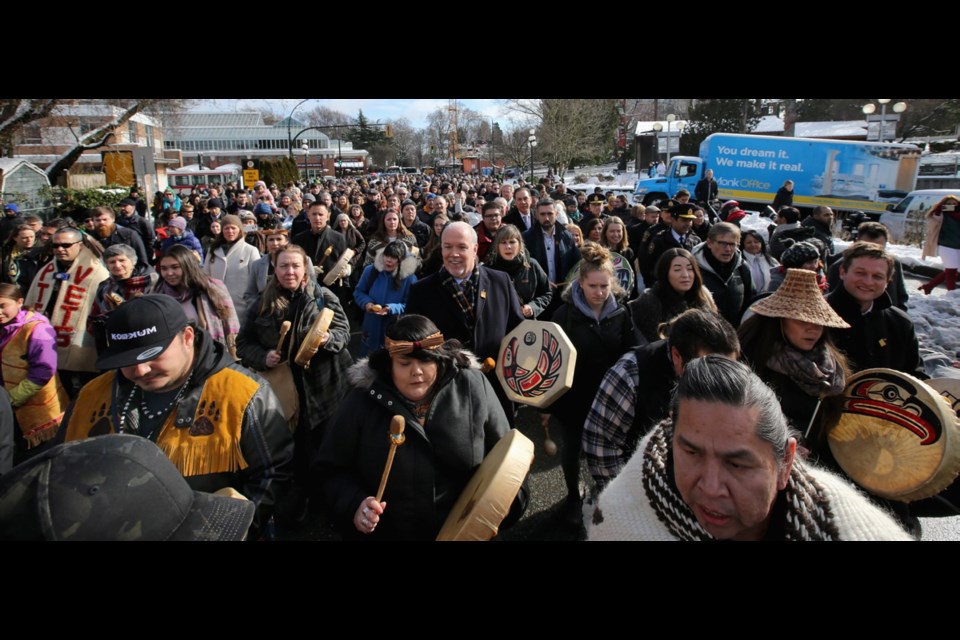With simple patches of moose hide pinned to their lapels, hundreds of people marched to the legislature Wednesday as the B.C. government announced the Moose Hide Campaign, which aims to end violence against women and children, will be formally rolled out in schools across the province.
In its eight years, the Indigenous-led movement has empowered men to stop the cycle of violence against women and children. It will be taught to kindergarten to Grade 12 students through an initiative called the Moose Hide Learning Journey.
“It’s now time to take the campaign in a formalized way into the school system,” said Education Minister Rob Fleming, “so that our kids from the youngest ages learn how to talk about very difficult subject matters, learn how to have strategies in their lives, learn how to have healthy relationships so that we can break the pattern of violence once and for all.”
The learning program is funded by a portion of the $2 million provided last year by the province to support the campaign’s work.
In a ceremony marked by First Nations drumming, song and dance, Raven Lacerte, who co-founded the campaign with her father, Paul, in 2011, said the fight to end violence against women and children has taken on a new meaning for her now that she has an eight-month-old daughter, Cedar.
“Now, having my daughter here, it just brings a whole new different kind of meaning and understanding for me of what it means to end violence toward women and children and what my role is in making sure my daughter lives a life free of violence, where she doesn’t have to live in fear of anything bad happening to her,” said Lacerte, who is part of the Carrier First Nation outside of Prince George.
Nine-year-old Jackson McRae, also from the Carrier First Nation, said he loves the Moose Hide Campaign and is happy to see it taught in schools.
His mother helps tan and cut moose hide squares that are a symbol of the campaign.
Paul and Raven Lacerte got the idea for the Moose Hide Campaign while hunting in northern B.C. near Highway 16, also known as the Highway of Tears due to the number of mostly Indigenous women and girls who have been murdered or gone missing along the route.
The Lacertes began cutting moose hide into squares and giving the pieces to men to wear as a visible sign of their commitment to ending violence against Indigenous women and children. The campaign has since spread nationally and Feb. 13 was officially proclaimed Moose Hide Campaign Day in B.C.
The campaign includes a one-day fast, which represents a show of solidarity in making changes as individuals and as a community.
B.C. Teachers’ Federation president Glenn Hansman said schools have already overhauled their curriculum to include Indigenous knowledge so the Moose Hide Campaign is a natural extension.
Teachers have been sent information electronically about the Moose Hide Campaign, Hansman said, which includes lesson plans, videos and other educational resources.
The program has been tested in a number of schools across B.C.
Last year, Premier John Horgan handed out the one millionth moose hide square and said the momentum of the campaign is evidenced in the fact that 1.5 million squares have been handed out across Canada.
Horgan thanked the dozens of MLAs who lined the legislature steps donning moose hide squares, proving that ending violence against women and children “is not a partisan issue.”



